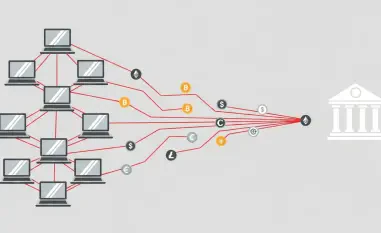In the evolving landscape of cybersecurity, Google has taken a decisive step by filing a lawsuit against the operators of the notorious Badbox 2.0 botnet, an alarmingly sophisticated network that has compromised over 10 million devices using Android open-source software. This legal action emerges as a critical move against an operation that lacks Google’s inherent security measures, resulting in pre-installed malware on countless devices that create vulnerabilities for large-scale fraud and other illicit activities. Despite Google Play Protect effectively shielding devices with Google services from this threat, the lawsuit aims to dismantle the vast criminal network propelling the botnet’s operations.
Origins and Operations of Badbox 2.0
Uncovering the Largest Botnet
Badbox 2.0 stands out as the largest identified botnet exploiting internet-connected TV devices, posing dire threats beyond fraud, such as potential ransomware attacks and DDoS threats. This malevolent network dupes users into installing applications that compromise their devices even further. Meanwhile, botnet operators sell access to these infected devices, which are then harnessed as residential proxies or misused for elaborate ad fraud schemes. This isn’t their first endeavor; an earlier botnet, the original Badbox, was disbanded by German authorities in 2023. The evolution into Badbox 2.0 reflects an escalating sophistication in cybercrime, where culprits continuously adapt to circumvent regulatory actions.
The sheer scale of the Badbox 2.0 network is a testament to its operators’ robust infrastructural capabilities, intensifying the urgency for intervention. Recognizing this looming threat, cybersecurity experts have consistently sounded alarms about the breadth and depth of its operations. The illicit network capitalizes on unsuspecting device owners, converting ordinary gadgets into tools of cybercrime without their owners’ knowledge. Such misuse of technology speaks volumes about the pressing necessity for stringent security protocols and legal mechanisms to curtail these illegal activities effectively.
Role of Cybercrime Groups
Google’s legal team has pinpointed multiple cybercrime factions operating primarily from China as the orchestrators behind the Badbox 2.0 operations. Each faction plays specific roles—from the initial malware development and strategic pre-installation on devices to the execution of deceitful schemes and the upkeep of the botnet’s infrastructure. These factions, intertwined through a web of shared communication channels and past business associations, collectively form what is considered the Badbox 2.0 Enterprise, a formidable entity rooted in criminal endeavors.
This collaborative structure of cybercriminals showcases the evolved organizational frameworks of modern-day cybercrime enterprises. Disturbingly, these groups operate with an almost corporate-like efficiency, leveraging their historical ties and infrastructural investments to sustain their operations. By identifying and understanding these intricate networks, efforts to stifle their undertakings become more strategic and potentially more impactful. Legal strategies such as Google’s lawsuit seek not only to incapacitate the immediate threat but also to dismantle the underlying enterprise-centric approach these cybercriminal entities adopt.
The Future of Legal and Technical Countermeasures
Seeking Legal Recourse
Google’s pursuit of legal redress is a pivotal move in the fight against the Badbox 2.0 botnet, seeking both immediate and long-term solutions. By requesting a legal injunction, Google intends to interrupt and dismantle the botnet’s operations, thereby weakening its technical infrastructure. Such a move underscores the necessity of legal frameworks to bolster technical defenses in the ongoing battle against cyber threats. The determination to employ legal avenues signals a broader strategy wherein tech companies harness judicial systems to deliver a decisive blow to cybercrime networks, emphasizing the need for an integrated approach that combines legal and technical expertise.
This legal action could set a precedent, challenging not just the infrastructure of botnets but also the intricate networks propelling them. Companies worldwide would benefit from observing these proceedings as a model for handling similar threats, ensuring they are equipped to counteract cybercriminal entities and their multifaceted operations. Although litigation alone cannot eradicate the threat entirely, it operates as a crucial tool in a broader toolkit for devising comprehensive security solutions. Such holistic strategies can foster an environment where botnets find it increasingly difficult to exploit vulnerabilities within global networks.
Reimagining Cybersecurity Approaches
In the dynamic realm of cybersecurity, Google has made a bold move by filing a lawsuit against those behind the infamous Badbox 2.0 botnet—an advanced network that has jeopardized more than 10 million devices utilizing Android open-source software. This legal action marks a significant effort to combat an operation lacking Google’s robust security protocols, leading to the proliferation of pre-installed malware on numerous devices, which opens the door to large-scale fraud and illegal activities. While Google Play Protect has been effective in safeguarding devices with Google services from these threats, the lawsuit’s objective is to dismantle the sprawling criminal network fueling the botnet. Google’s legal pursuit emphasizes the importance of maintaining security on devices and protecting users from vulnerabilities, reinforcing its commitment to eradicating malicious networks and ensuring the integrity of its software ecosystem amid evolving cyber threats.













